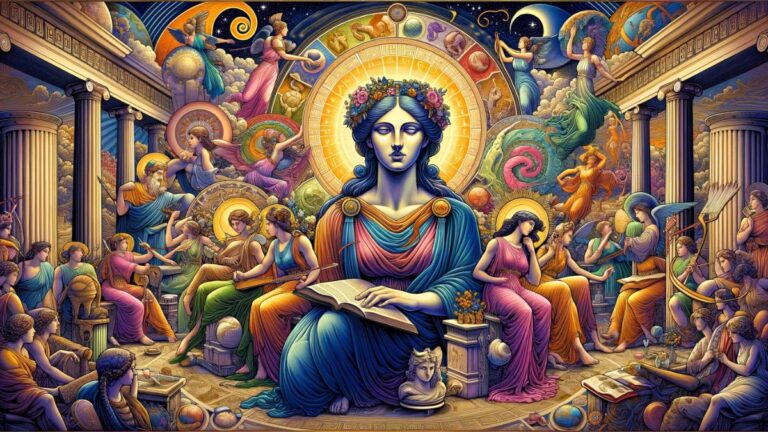Pan Family Tree: Rustic Revels and Forest Lineages

Diving into the Pan family tree is like wandering through an ancient forest, where each twist and turn reveals enchanting tales of rustic life and deep-rooted connections. This journey isn’t just about tracing lineage; it’s about celebrating the vibrant traditions and natural bonds that have thrived in forest communities for generations.
Roots of Tradition: The Beginnings
Pan, the god of the wild, shepherds, and flocks, has a fascinating origin rooted deeply in Greek mythology. Born to Hermes and the nymph Dryope, Pan’s very essence is intertwined with the rustic wilderness of ancient Greece. From his earliest moments, Pan was depicted with the legs and horns of a goat, symbolizing his connection to nature and the animal kingdom. This unique heritage set the stage for his role as the guardian of shepherds and their flocks, a deity deeply revered in the pastoral traditions of the time.
Pan’s upbringing in the forested mountains and his tutelage under nature’s watchful eye imbued him with the skills and wisdom to navigate the wild with ease. His love for music led to the creation of the Pan flute, an instrument that became iconic for its hauntingly beautiful sounds, capable of stirring the hearts of gods and mortals alike. Pan’s melodies were said to resonate through the valleys and forests, encapsulating the spirit of the natural world.
The myths surrounding Pan’s birth and early life are imbued with the themes of spontaneity and unpredictability, much like the natural environments he embodies. His sudden, joyous birth surprised his mother so much that she fled in fright, but Hermes lovingly embraced Pan’s uniqueness, taking him to Olympus to introduce him to the other gods. This acceptance by Hermes highlights the celebration of diversity and the natural world’s intrinsic value within Greek mythology.
Branching Out: The Evolution of Rustic Celebrations
Pan’s influence on rustic celebrations and festivals in ancient Greece is profound, embodying the spirit of wilderness and fertility. The Panathenaea, a significant festival in Athens, saw his worship alongside Athena, indicating his importance in the civic and religious life of the city. Rural festivities often included rites and rituals to honor Pan, invoking his protection and blessings for fertility, both for crops and livestock.
Dances and musical performances featuring the Pan flute were central to these celebrations, with participants often emulating Pan’s wild, untamed nature through their revelry. The Arcadian festivals, particularly, celebrated Pan’s aspect as a fertility deity, with rituals designed to ensure the land’s fecundity and the well-being of the community. These events fostered a deep sense of connection between the people and the natural world, a reflection of Pan’s own harmonious existence within it.
Moreover, the tradition of the siesta, or the midday rest during the hottest part of the day, is attributed to Pan’s own need to rest from the heat, further embedding him into the daily lives and practices of the Greeks. This adaptation of daily routines in homage to Pan illustrates the profound impact of mythological figures on the ancient Greeks’ everyday lives, blending the divine with the mundane.
Leaves of Legacy: Notable Figures in the Pan Family
While Pan himself is a central figure in Greek mythology, the narratives around his family are less about lineage and more about his interactions with other deities and mortals. His father, Hermes, plays a crucial role in Pan’s story, not only as a parent but also as a mediator who introduces Pan to the other Olympian gods. Hermes’ guidance and support highlight the interconnectedness of the gods’ relationships and their influence on the natural and divine worlds.
Pan’s encounters with nymphs and other deities often led to various adventures and stories that enriched Greek mythological lore. For instance, his pursuit of the nymph Syrinx, who transformed into reeds to escape him, resulted in the creation of the Pan flute. This tale underscores the themes of desire, transformation, and artistic inspiration, with Pan’s longing giving birth to a musical instrument that became synonymous with his image.
Although Pan is not traditionally associated with a large family tree of descendants, his interactions with other mythological beings demonstrate the complexity and depth of his character. His relationships are reflective of his nature: part divine, part wild, and wholly integral to the fabric of Greek mythology.
The Forest’s Influence: Nature and Nurture Intertwined
In the myths surrounding Pan, the forest is not just a setting—it’s a living entity that shapes and is shaped by Pan’s presence. The wild landscapes of Arcadia, where Pan often dwelt, were places of mystery and enchantment, teeming with creatures and spirits that acknowledged Pan as their lord. His very essence was intertwined with the rustling leaves, the murmuring streams, and the whispering winds, making him a symbol of the untamed natural world.
Pan’s ability to instill panic, known as “panic fear,” especially in lonely or remote places, highlights the dual nature of the forest—both nurturing and daunting. This aspect of Pan reminds us of the respect and caution with which the ancients approached the wilderness. The forest’s duality as a source of sustenance and a realm of the unknown reflects the complex relationship between humans and nature, characterized by dependency, awe, and fear.
Moreover, Pan’s interactions with the forest creatures, from nurturing the bees to leading the nymphs in dance, illustrate the harmony that can exist between the natural world and its inhabitants. This harmonious existence underscores the belief in a world where every element is connected, where the divine can be found in the natural, and where respect for nature is paramount for coexistence.
Seasonal Festivities: Marking Time in the Wilderness
The cycle of seasons was deeply significant in ancient Greek life, influencing agricultural practices, religious ceremonies, and social gatherings. For followers of Pan, the changing seasons were intimately linked with the god’s moods and activities. Spring, with its explosion of life, was particularly important, symbolizing Pan’s joy and vitality as he roamed the forests, playing his flute and leading the wild dances. Festivals during this time would involve rustic feasts, music, and dancing that mirrored the natural rebirth around them.
Summer was a time of abundance, and celebrations in Pan’s honor would give thanks for the fertility of the land, often coinciding with the harvest. These festivities were not only a tribute to Pan’s generosity but also an invocation for his continued favor. The warmth and bounty of summer reflected Pan’s full power, with the vibrant, lush landscapes serving as a testament to his influence.
As autumn approached, the tone of the celebrations shifted. The fading light and falling leaves were reminiscent of Pan’s quieter, more reflective side. Rituals and offerings were made to appease him as the year waned, ensuring that the land would rest and rejuvenate during the winter, ready to burst forth again with life in the spring. This cycle of festivities, tied to the land’s rhythms, reinforced the community’s bond with Pan and the natural world.
Conservation and Continuity: Protecting Our Heritage
In the context of Pan and the ancient Greek world, conservation had a different connotation than it does today, but the underlying principles of respect for nature and the desire for sustainability were present. The myths and rituals surrounding Pan emphasized the importance of living in harmony with the natural world, of taking only what was needed and giving back in return. This ancient wisdom speaks to a time-honored understanding of the delicate balance of ecosystems.
The reverence for Pan and the natural spaces he embodied encouraged a form of early environmentalism, where groves, springs, caves, and mountains were considered sacred and thus protected. These areas, believed to be imbued with divine presence, were preserved not just for religious reasons but also as vital components of the natural landscape. The protection of these spaces was akin to ensuring the continuity of life and the preservation of the natural order.
In modern times, the legacy of Pan and the ethos of ancient practices can inspire contemporary conservation efforts. The mythological narratives that celebrated the symbiosis between deities like Pan and the natural world can serve as a reminder of our responsibility to protect and preserve our environment. Drawing from these ancient traditions, we can foster a deeper appreciation for the natural world, recognizing it as a source of life, inspiration, and spiritual nourishment, just as the ancients did.






